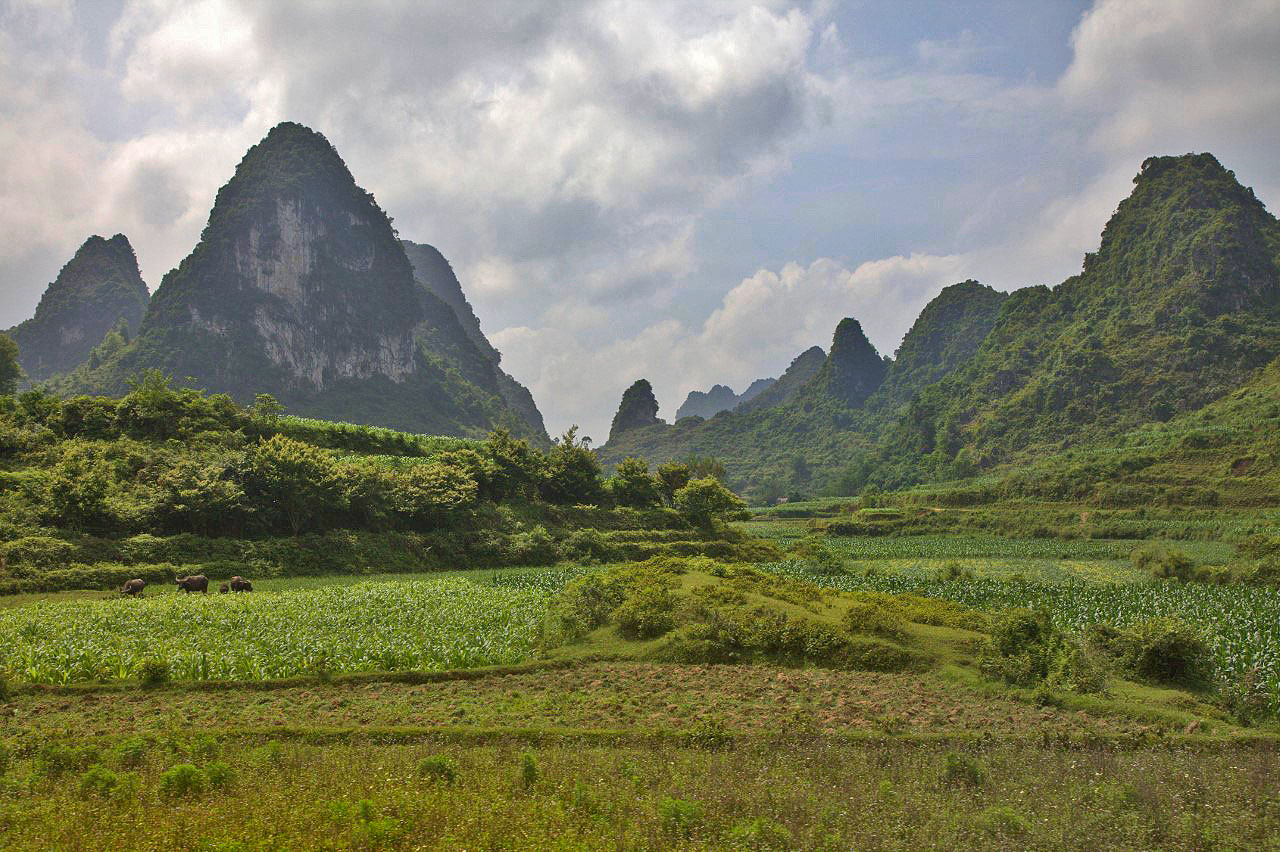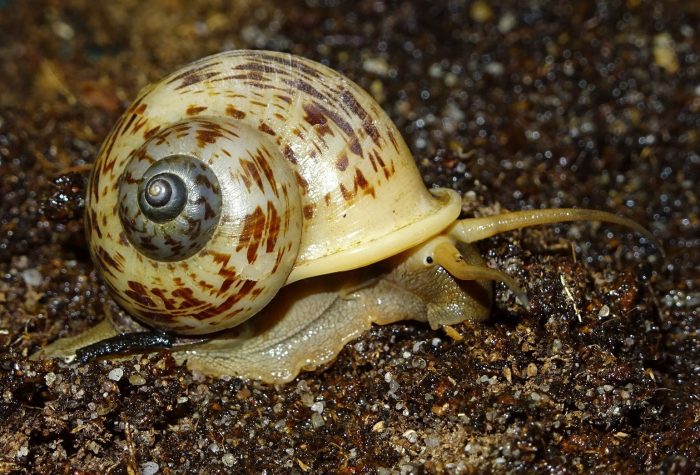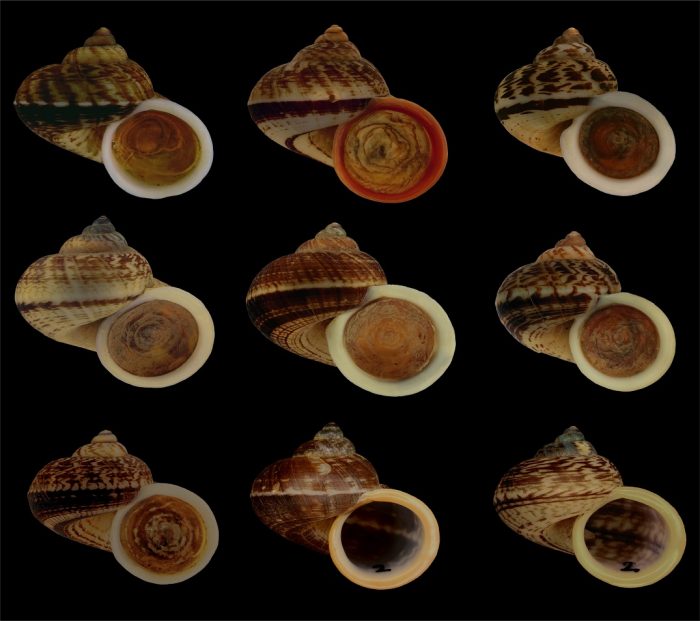
The picturesque limestone karsts of northern Vietnam harbor a rich diversity of animals and plants. Due to their scattered distribution, these karsts can form terrestrial habitat islands for organisms that depend on a calcium-rich environment. Today, many karst habitats are threatened, notably due to the extraction of limestone for the production of construction materials such as concrete.
While a number of protected areas have been established across Vietnam, targeted conservation of karst biodiversity relies on correct species identification, and the flora and fauna of Vietnam’s limestone karsts are far from being thoroughly explored.
Just one species?
In a study that was recently published in the journal PLOS ONE, karst-inhabiting land snails of the genus Cyclophorus were examined. These snails are generally common in Vietnam’s limestone karst habitats, live in leaf litter, and feed on decomposing plants. Many Cyclophorus species differ considerably from each other in shell morphology. The shells of some species reach the size of peaches while others are small as hazelnuts, and they can be rather round or comparatively flat. Many species are also known to have only small distribution ranges. In contrast, representatives of these snails with very similar shells have been reported from large parts of Vietnam. Their shells are medium in size and rounded in shape.
Because of their superficial similarity, these snails have often been regarded as belonging to a single species. In order to unravel their diversity and evolutionary history, specimens from the land snail collections of the Natural History Museum, London, were examined in the study.
What morphology conceals

Live specimen of the newly described species Cyclophorus cucphuongensis. Image: Katharina C. M. von Oheimb
Based on DNA sequence data, the study revealed a cryptic (i.e. hidden due to a lack of obvious morphological differences) diversity of snails with very similar shells. A total of nine different Cyclophorus species have been identified, and four of them, named Cyclophorus cucphuongensis, C. paracucphuongensis, C. phongnhakebangensis, and C. takumisaitoi, were newly described. Given that some of the examined species were only distantly related, processes of convergent evolution were likely involved in their origin. This means that their similar shell morphology probably evolved independently during evolutionary history.
So far, new Cyclophorus species have typically been described based only on shell morphology. Given the study’s findings, however, it is apparent that basic shell characters are not sufficient for unambiguous species identification of these snails.
Avoiding competition

Shells of all nine morphologically similar Cyclophorus species that have been identified in the study. Image: Katharina C. M. von Oheimb & Parm Viktor von Oheimb
Interestingly, the studied species were almost never found to occur together at the same locality. A similar shell morphology in land snails can be linked to similar ecological adaptations. The distribution pattern of the examined species could thus result from competition among them, where similar species exclude each other from the same site. Only at one locality did individuals of two of the examined species occur together. At this place, however, the species differed considerably from each other in shell size. Their different morphology could result in a decreased competition between them and, thus, allow their co-occurrence.
The tip of an iceberg?
The cryptic diversity found in the genus Cyclophorus is likely not an exception; Vietnam’s scattered limestone karsts are probably home to many more undetected cryptic species from various other groups of karst-inhabiting organisms. Unrecognized cryptic species can pose problems for karst conservation as their presence can result in underestimations of regional species richness and of the biotic uniqueness of individual karsts. This can mislead decisions, for example, regarding the selection of areas for limestone extraction and protection. A systematic and efficient exploration of Vietnam’s enigmatic karst biodiversity is thus essential for providing a solid basis for future conservation planning.









